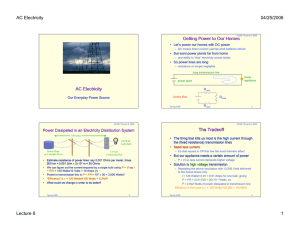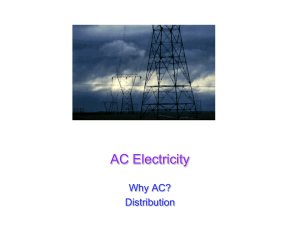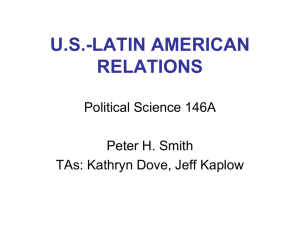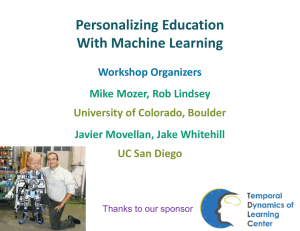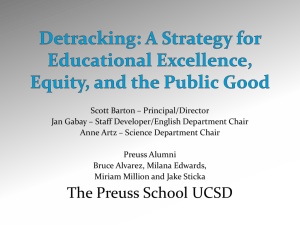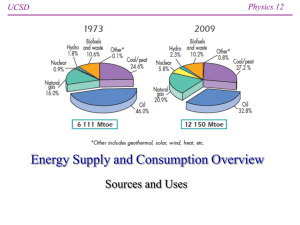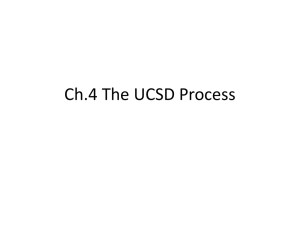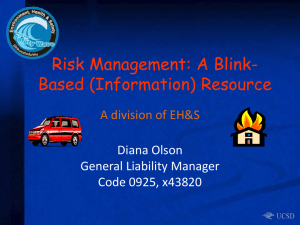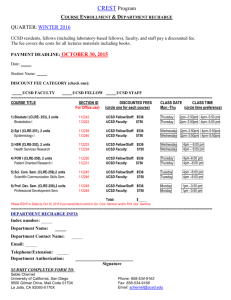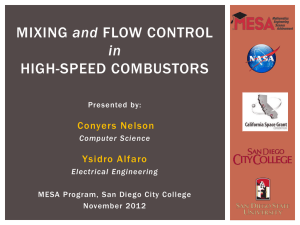AC Electricity - UCSD Department of Physics
advertisement
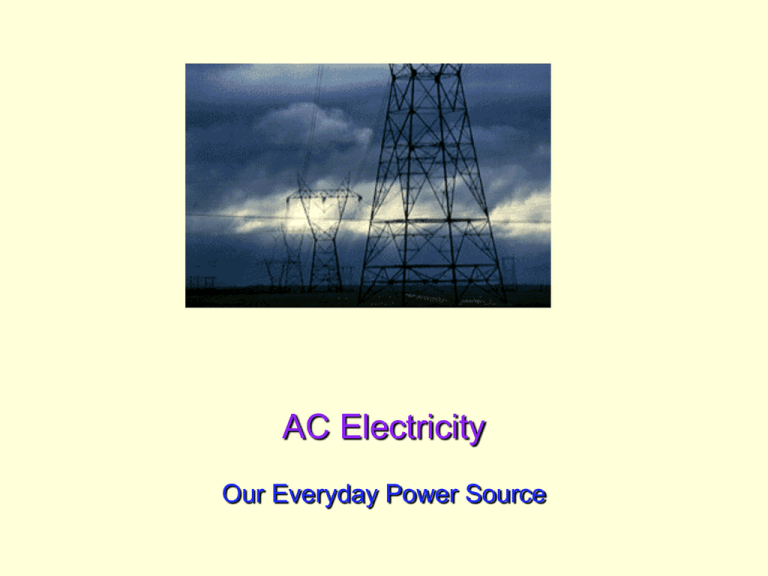
AC Electricity Our Everyday Power Source UCSD: Physics 8; 2006 Getting Power to Our Homes • Let’s power our homes with DC power – DC means direct current: just like what batteries deliver • But want power plants far from home – and ability to “ship” electricity across states • So power lines are long – resistance no longer negligible long transmission line home appliance power plant Rwire looks like: Spring 2006 Rload Rwire 2 UCSD: Physics 8; 2006 Power Dissipated in an Electricity Distribution System 150 miles 120 Watt Light bulb Power Plant on Colorado River 12 Volt Connection Box • Estimate resistance of power lines: say 0.001 Ohms per meter, times 200 km = 0.001 W/m 2105 m = 20 Ohms • We can figure out the current required by a single bulb using P = VI so I = P/V = 120 Watts/12 Volts = 10 Amps (!) • Power in transmission line is P = I2R = 102 20 = 2,000 Watts!! • “Efficiency” is e = 120 Watts/4120 Watts = 0.3%!!! • What could we change in order to do better? Spring 2006 3 UCSD: Physics 8; 2006 The Tradeoff • The thing that kills us most is the high current through the (fixed resistance) transmission lines • Need less current – it’s that square in I2R that has the most dramatic effect • But our appliance needs a certain amount of power – P = VI so less current demands higher voltage • Solution is high voltage transmission – Repeating the above calculation with 12,000 Volts delivered to the house draws only I = 120 Watts/12 kV = 0.01 Amps for one bulb, giving P = I2R = (0.01)220 = 2010-4 Watts, so P = 0.002 Watts of power dissipated in transmission line Efficiency in this case is e = 120 Watts/120.004 = 99.996% Spring 2006 4 UCSD: Physics 8; 2006 DANGER! • But having high voltage in each household is a recipe for disaster – sparks every time you plug something in – risk of fire – not cat-friendly • Need a way to step-up/step-down voltage at will – can’t do this with DC, so go to AC Spring 2006 5 UCSD: Physics 8; 2006 A way to provide high efficiency, safe low voltage: step-up to 500,000 V step-down, back to 5,000 V ~5,000 Volts step-down to 120 V High Voltage Transmission Lines Low Voltage to Consumers Spring 2006 6 UCSD: Physics 8; 2006 Transmission structures three-phase “live” wires to house 500,000 230,000 long-distance Spring 2006 138,000 69,000 7–13,000 neighborhood 7 UCSD: Physics 8; 2006 Why is AC the solution? • AC, or alternating current, is necessary to carry out the transformation • To understand why, we need to know something about the relationship between electric current and magnetic fields • Any current-carrying wire has a circulating magnetic field around it: Spring 2006 8 Electromagnet Coil UCSD: Physics 8; 2006 • By arranging wire into a loop, you can make the magnetic fields add up to a substantial field in the middle looks just like a magnet Spring 2006 9 UCSD: Physics 8; 2006 Induced Current • The next part of the story is that a changing magnetic field produces an electric current in a loop surrounding the field – called electromagnetic induction, or Faraday’s Law Spring 2006 10 UCSD: Physics 8; 2006 Transformer is just wire coiled around metal • Magnetic field is generated by current in primary coil • Iron core channels magnetic field through secondary coil • Secondary Voltage is V2 = (N2/N1) V1 • Secondary Current is I2 = (N1/N2) I1 • But Power in = Power out – negligible power lost in transformer • Works only for AC, not DC If the primary wires and secondary wires don’t actually connect, how does the energy get from the primary circuit to the secondary circuit?! Spring 2006 11 UCSD: Physics 8; 2006 Typical Transformers Spring 2006 12 UCSD: Physics 8; 2006 Alternating Current (AC) vs. Direct Current (DC) • AC is like a battery where the terminals exchange sign periodically! • AC sloshes back and forth in the wires • Recall when we hooked up a bulb to a battery, the direction of current flow didn’t affect its brightness • Although net electron flow over one cycle is zero, can still do useful work! – Imagine sawing (back & forth), or rubbing hands together to generate heat Spring 2006 13 UCSD: Physics 8; 2006 = 170 Volts = -170 Volts 120 VAC is a root-mean-square number: peak-to-peak is 340 Volts! Spring 2006 14 UCSD: Physics 8; 2006 AC Receptacle • Receptacles have three holes each • Lower (rounded) hole is earth ground – connected to pipes, usu. – green wire • Larger slot is “neutral” – – – – for current “return” never far from ground white wire if wired correctly • Smaller slot is “hot” – swings to +170 and -170 – black wire – dangerous one Spring 2006 15 UCSD: Physics 8; 2006 Assignments • Read pp. 353–368 to accompany this lecture • Read pp. 391–392, 398–403 (don’t fret over the complicated explanation of the diode) • HW #3: Chapter 10: E.2, E.10, E.32, P.2, P.13, P.14, P.15, P.18, P.19, P.23, P.24, P.25, P.27, P.28, P.30, P.32 • Q/O #2 due 4/28 • Midterm 5/04 (next Thu.) 2PM WLH 2005 – will prepare study guide and post online – will have review session next week (time TBA) Spring 2006 16
